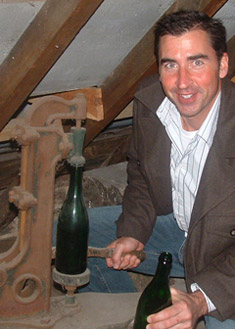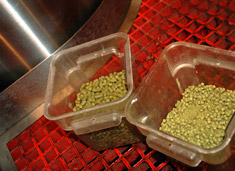“Craft” beer sales were way up in 2007. No matter how you want to define “craft” beer we already knew the numbers were going to be good, but the news is still a joy. Details in a moment.
What about 2008? What about the rising cost of ingredients forcing brewers to raise prices just at a time consumers are feeling the impact of a slowing economy?
Well, this news from January:
– Today, Dan Wadel of of Information Resource Inc. told members of the Brewers Association that “craft” beer case sales were up 12% and dollar sales were up 15.8%. That’s not quite the growth rate of 2007, but darn close.
– That’s the best January since IRI began tracking “craft” beer sales in 2001.
– “Brew” Blog reported similar numbers from Nielsen, that the national average weighted case price for craft beers increased by 4.9%.
– “Brew” Blog also quoted from Beer Marketer’s Insights Express:
New Coors prexy Peter Swinburn noted “vibrancy” of US beer biz and that Coors whole portfolio “is sort of singing” these days. Asked if Coors saw any trading down in US, Peter told INSIGHTS “in our portfolio, we don’t see any evidence.” (Miller prexy Tom Long told Mich/Ill distribs last week he saw no trading-down either.) While Keystone Light is growing rapidly, so are other brands in portfolio. “No evidence” that Blue Moon is coming off kind of growth path it has enjoyed.
Yep, we must talk about Blue Moon White again. Dollar sales were up 55% in 2007. It’s sales are within a stone’s throw of Sierra Nevada Pale Ale and Samuel Adams Boston Lager, which are the one-two (in that order) “craft” beer brands.
Wadel mostly discussed 2007 in a presentation he gives BA members twice a year. As a little background, IRI uses scanner data to track sales of consumer package goods in a variety of channels, so does not record every beer sold. Nielsen track slightly differently sales, and neither define “craft” beer like the Brewers Association.
The BA soon will release “craft” beer numbers for 2007, which will be based on actual production reported by the members it classifies as “craft” producers. There will be differences, but in past years they have not been large.
So a couple of more things from Wadel:
– “Craft” beer dollar sales were up 16.7% in 2007, following a 17.9% increase in 2006.
– In the last two weeks of 2007 (Christmas/New Year’s holiday sales) “craft” sales were up 15.8%, versus just a 3.1% increase for imports.
And one which merits considering the advice of Satchel Paige (“Don’t look back. Something might be gaining on you.”):
– Domestic super premium sales, which shrunk in 2006, were up 17.4% in 2007. Domestic premium beers include those from Leinenkugel, Michelob, Killians, Henry Weinhard and, of course, the aforementioned Blue Moon. They sell in the same price range as “craft” beers.
The biggest reason super premiums were up is 2007 newcomer Miller Chill, which had $40.8 million sales in the channels IRI tracks. By comparison Blue Moon White sold $47.8 million and Boston Lager $49.9 million.
 When
When  How much beer will those 10 tons of hops
How much beer will those 10 tons of hops  Jim Koch sent a big old hops valentine to smaller breweries on Thursday. Ten tons worth.
Jim Koch sent a big old hops valentine to smaller breweries on Thursday. Ten tons worth.